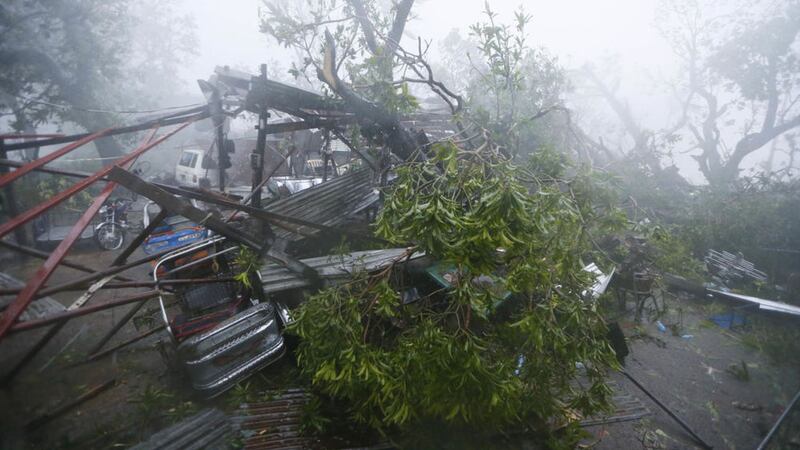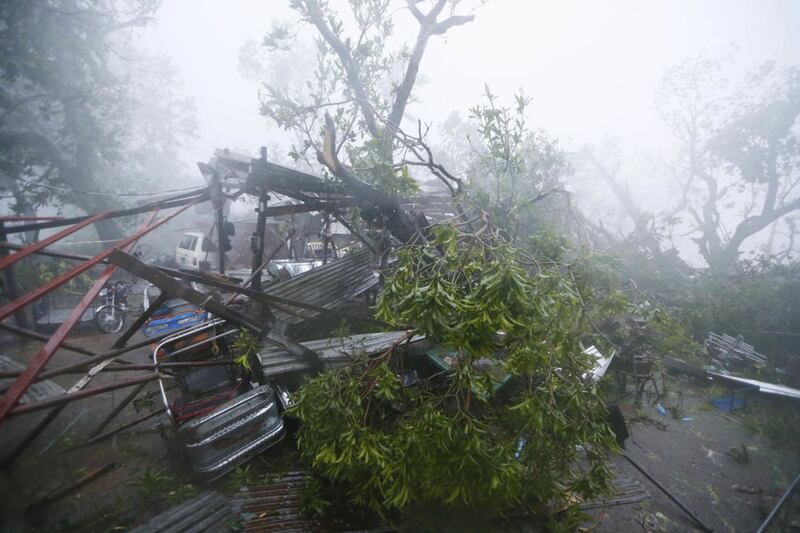AT least seven people have been killed after Super Typhoon Haima smashed into the northern Philippines with ferocious winds and rains.
The storm flooded towns and forced tens of thousands to flee before weakening and blowing into the South China Sea, officials said.
Haima's blinding wind and rain had rekindled fears and memories from the catastrophe wrought by Typhoon Haiyan in 2013, but there were no immediate reports of major damage, amid faulty communications and power outages in several villages cut off from government aid and rescue teams by fallen trees, landslides and flooding.
Nearly 100,000 villagers were evacuated from high-risk communities as the typhoon approached, helping to limit the number of casualties.
Two construction workers died when a landslide buried their shanty in La Trinidad town in the mountain province of Benguet, officials said, while two villagers drowned in floodwater and another is missing in Ifugao province, near Benguet.
A 70-year-old man died apparently of a heart attack while being taken to an emergency shelter from a flooded neighbourhood in Isabela province, officials added.
The fast-moving Pacific typhoon slammed into the shore in north-eastern Cagayan province late on Wednesday then barrelled north-west before blowing out into the South China Sea with sustained winds of 93mph and gusts of up to 115mph, according to forecasters.
The weakening storm is expected to blow towards China, Filipino forecasters said.
After dawn, the extent of damage in Cagayan - about 300 miles north of Manila - and nearby regions became evident, with overturned vans, toppled electricity poles and debris blocking roads.
Most stores, their window panes shattered and canopies shredded by the wind, were closed.
In northern Ilocos Sur province, ricefields resembled brown lakes under waist-high floodwaters, although clean-up operations have started.
"Search, rescue and retrieval operations are ongoing," Office of Civil Defence spokesman Ricardo Jalad said in a statement.
The government's weather agency lowered most of its storm warnings after the typhoon blew out of the main northern Luzon region.
Many of the provinces hit by the storm were still recovering from a powerful typhoon that killed two people and displaced tens of thousands of villagers last weekend.
President Rodrigo Duterte urged people in the typhoon's path to heed orders by disaster agencies.
About 20 typhoons and storms lash the Philippines each year, adding to the many burdens in a country that is also threatened by earthquakes and volcanic eruptions and considered one of the world's most disaster-prone nations.
In November 2013, Typhoon Haiyan struck the central Philippines with ferocious power, leaving more than 7,300 people dead and displacing over five million others after levelling entire villages.



